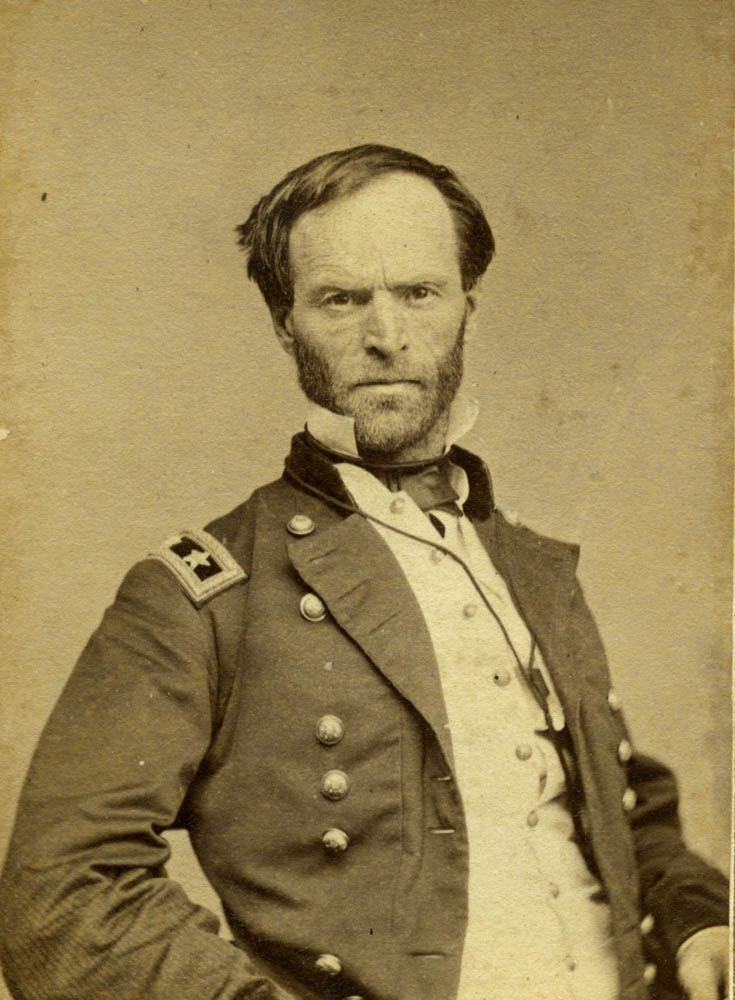One of the most famous generals of the American Civil War, William T. Sherman was born February 8, 1820, in Lancaster, Ohio; he received an appointment to West Point at the age of 16. After graduating in 1840 he was commissioned a second lieutenant with the 3rd U. S. Artillery. In 1853, Sherman resigned from the army and became manager of the San Francisco branch of a St. Louis-based bank.
In May 1861, Sherman, then the head of a St. Louis streetcar company, found himself directly involved with the beginning of the Civil War in Missouri. On May 10, Captain Nathaniel Lyon’s Union force surrounded the Missouri Militia encampment at Camp Jackson. Sherman and his son Willie went to watch the proceedings. During the subsequent altercation, the Union troops opened fire on the crowd. Sherman threw himself on the ground, while Charles Ewing, Sherman’s brother-in-law, threw Willie on the ground and covered him with his body. Sherman then grabbed Willie and ran to a gulley, where they stayed until the firing ceased.
A few days after Camp Jackson, Sherman was commissioned colonel of the 13th U. S. Infantry and distinguished himself in command of a brigade at First Bull Run. He was promoted to brigadier general later that summer.
On April 6-7, 1862, Sherman commanded a division at the Battle of Shiloh, and was soon promoted to major general. He led an army corps in the Vicksburg and Chattanooga campaigns, and in early 1864 led an army from Chattanooga to Atlanta. Sherman captured Atlanta that September, marched his army from Atlanta to Savannah and through the Carolinas, forcing the surrender of the Confederate Army of Tennessee.
In 1869 Sherman was promoted to full general and named commanding general of the U. S. Army. While in this position, he established the Command and General Staff College at Fort Leavenworth, Kansas, which is still in operation.
General Sherman died on February 14, 1891, in New York City and is buried in Calvary Cemetery at St. Louis, Missouri.
Carte-de-Visite by Morse’s Photographic Gallery, Huntsville, Ala.
Image Courtesy Wilson’s Creek National Battlefield; WICR 31521




